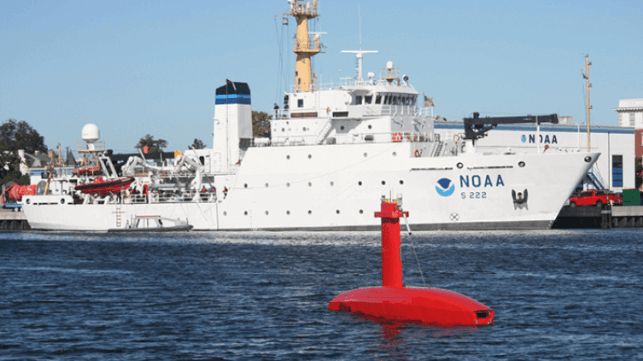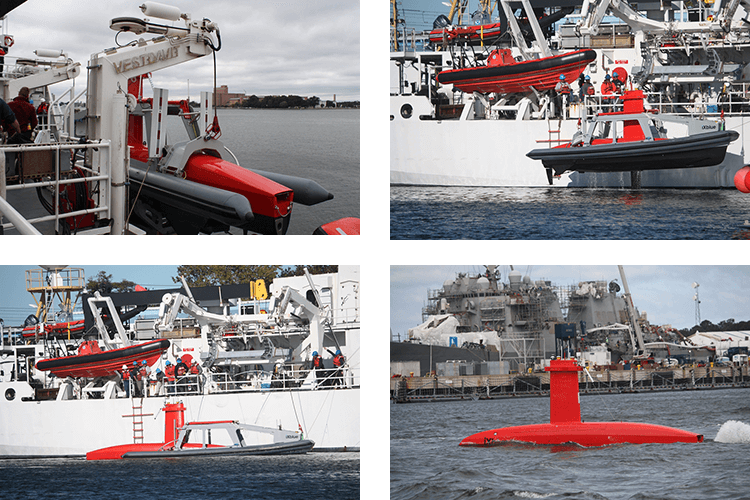NOAA Builds on Unmanned Surveys by Teaming USV With Research Vessel

NOAA Fisheries is evaluating the use of cutting-edge technology that has the potential to improve acoustic-trawl surveys of walleye pollock, the largest U.S. fishery. The goal is to explore the use of uncrewed surface vehicles (USVs) to work in tandem with NOAA ships to improve the efficiency of collecting acoustic and biological data to estimate pollock abundance.
We are undertaking this work with the help of federal, academic and industry partners. In January, the Alaska Fisheries Science Center survey team, NOAA Office of Marine and Aviation Operations, Exail, and the University of New Hampshire, conducted initial ship integration tests off Seattle. They successfully demonstrated that a DriX USV could be an effective tool for supporting ship-based surveys.
DriX is a seagoing uncrewed boat that is able to conduct both remote-controlled and supervised autonomous operations (within visual range or Over The Horizon).
Scientists and crew were able to make modifications allowing the DriX to be deployed and recovered from the NOAA Ship Oscar Dyson. They installed the USV’s communication and control systems. During a 3-day cruise in Puget Sound off the coast of Washington, they focused on practicing deploying and recovering the drone and collecting acoustic data. Given the initial success, we will further evaluate DriX during a walleye pollock survey planned for this summer.

The DriX is protected by a floating cradle, which is lowered and retrieved by the NOAA ship Oscar Dyson. Scientists practiced deploying and recovering the DriX in Puget Sound in January. Credit: NOAA Fisheries.
“Our work this year builds on previous NOAA Fisheries USV experience,” said Alex De Robertis, fisheries biologist, Alaska Fisheries Science Center. “When ship surveys were canceled during the COVID pandemic in 2020, we deployed wind-powered USVs to collect data for pollock abundance estimates while keeping human crews safe.”
USVs have proved to be effective and cost-efficient tools for making acoustic measurements of fish. However, USVs cannot collect key biological data such as species, size, weight, length, and sex. This limits their use in fisheries stock assessments.
To improve acoustic survey efficiency while providing this essential biological data, scientists are now deploying a fast, new generation USV in tandem with a NOAA ship to collect acoustic data. The vessels will operate side by side, on alternate survey transects.
“We hope to determine if the USV can be routinely deployed, recovered, and refueled from the ship quickly enough so that it can make some of the acoustic measurements while keeping up with the survey ship. If it can, then the ship will be able to collect biological samples with a trawl at the locations where fish aggregations are detected by either the ship or the USV,” said De Robertis.
The tandem approach provides multiple benefits. Alternating USV and ship transects has the potential to increase survey efficiency: the same area can potentially be surveyed in 40 percent less time than by a ship working alone without degrading data quality. The use of a USV during a tandem survey has the potential to free up in-demand NOAA ships for additional missions .
This summer will be the big test to see how things go with the DriX in the field, and there will be further updates when NOAA Fisheries staff return from the pollock survey in August.
This story appears courtesy of NOAA Fisheries and may be found in its original form here.
The opinions expressed herein are the author's and not necessarily those of The Maritime Executive.
